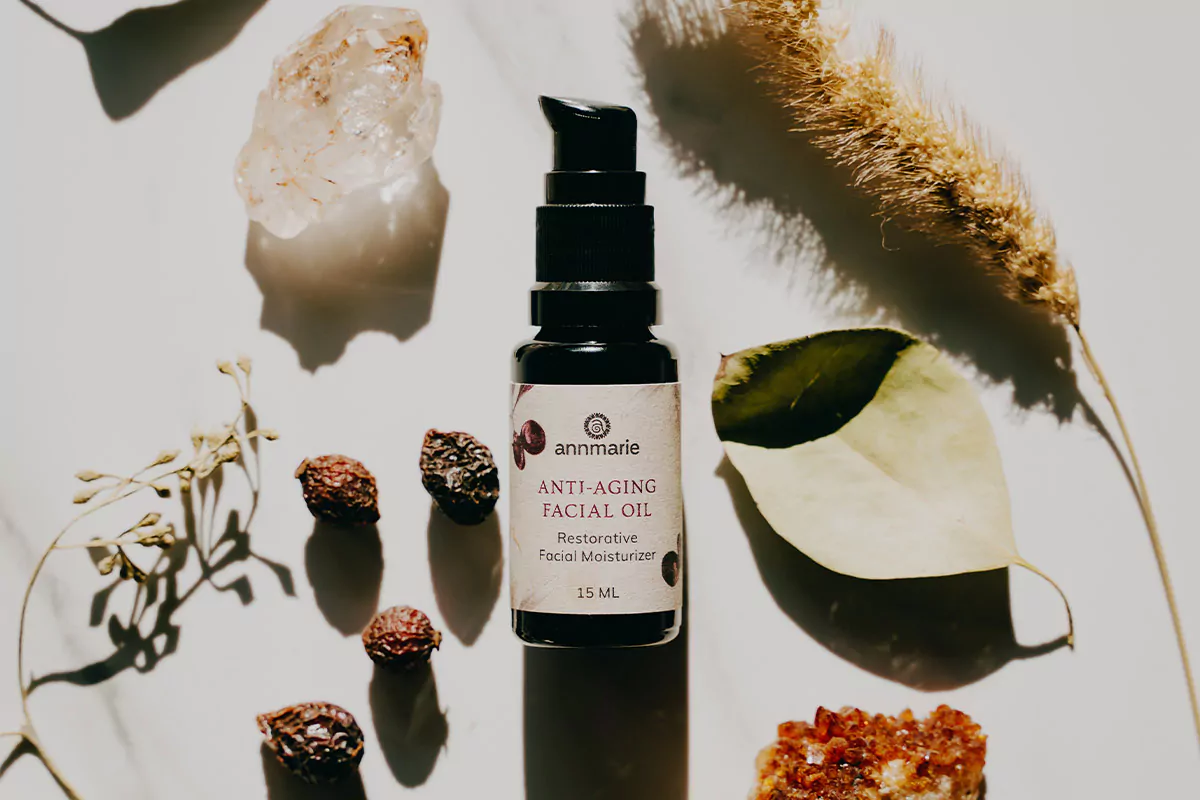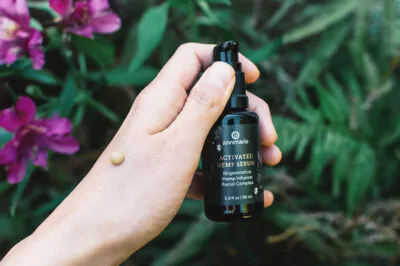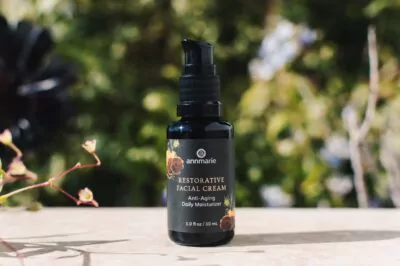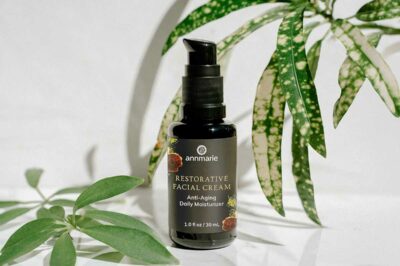Table of Contents[Hide][Show]
Alpha lipoic acid (ALA) is a hot topic in the world of beauty, and for good reason. This potent antioxidant is naturally found in our bodies and—when ingested or applied topically—can help protect our skin from environmental stressors that contribute to premature aging. Its popularity puts it on par with other skin care ingredients such as vitamin C. In fact, ALA has been found to be 400 times more potent than vitamin C, making it a true powerhouse in skin care.
Alpha lipoic acid skin care is very versatile and can help your complexion in many ways, from brightening and firming to reducing temporary redness and minimizing the appearance of fine lines and wrinkles. But what makes ALA truly stand out is its ability to go beyond both water and oil-based layers of the skin, making it an ideal ingredient for all skin types. In this article, we’ll explore alpha lipoic acid and its benefits, and why it is often considered a “must-have” in your skin care routine.
Where Does Alpha-Lipoic Acid Come From?

Alpha lipoic acid, also known as thioctic acid, is a naturally occurring antioxidant that is found in many foods and particularly high in spinach, broccoli and organ meats. Lipoic acid is actually present in numerous natural foods, which is how plants get their cell structures and protect themselves from toxins in the environment.
In topical skin care, alpha lipoic acid is most commonly derived from yeast and plant sources, such as beets and carrots. The ingredient is processed by extracting it from the source material, purifying it and stabilizing it for use in skin care formulations. However, despite being a natural substance, it is usual to see synthetically-produced ALA as an ingredient in skin care due to the ability to control the concentration and consistency. We always recommend reaching out to the company you buy your products from to better understand how such ingredients are sourced and processed so that you have a full understanding of exactly what you are putting on your skin.
What Is Alpha Lipoic Acid in Skin Care?
Alpha-lipoic acid (ALA) is a powerful antioxidant that is often used in skin care products for its ability to nourish and protect skin from environmental stressors. Because alpha lipoic acid is a small molecule that is both water and oil-soluble, it can easily sink into the skin barrier and work its antioxidant magic from within the skin. Alpha lipoic acid skin care products work to improve skin texture, reduce the appearance of fine lines and wrinkles and enhance the overall radiance of your skin.
It is typically recommended to use alpha lipoic acid skin care products with a 1-5% concentration of ALA, as higher concentrations can result in skin irritation, redness and dryness. If you have sensitive skin, always patch test before a full application and look for lower concentrations to start with.
Alpha Lipoic Acid Skin Care Benefits

Alpha-lipoic acid (ALA) is a potent antioxidant that offers numerous benefits to your skin. It can:
- Help reduce temporary redness
- Diminish the appearance of fine lines and wrinkles
- Improve skin texture
- Enhance skin radiance for a more youthful glow.
ALA has also shown the ability to increase levels of other antioxidants, such as vitamins C and E, which further boosts its skin-protecting benefits.
How To Use Alpha Lipoic Acid on Skin
When it comes to using alpha-lipoic acid (ALA) on the skin, it’s important to start slowly and patch test first to ensure there’s no adverse reaction. ALA can be found in various forms, including serums, creams and masks. It’s recommended to use products that contain a concentration of 1-5% ALA, and to apply them to clean, dry skin once or twice a week. It’s also important to follow up with a broad-spectrum sunscreen during the day, as ALA can increase skin sensitivity to the sun. Overall, incorporating ALA into your skin care routine can provide numerous benefits for healthy, glowing skin.
Frequently Ask Questions
Is Alpha Lipoic Acid Good for Skin?
Alpha lipoic acid can be a great ingredient for skin due to its water and oil-soluble property, which allows this ingredient to penetrate deep into the skin for high effectiveness. Alpha lipoic acid skin care brightens, firms and helps to reduce the appearance of fine lines. When this ingredient is marketed in skin care, it often features a synthetically-produced version, which can be done with either a pure method of processing or less ideal methods.
We highly recommend you reach out to the company you are purchasing your product from to understand how this ingredient is produced, so that you can feel confident knowing exactly what you are putting on your skin.
Does Alpha-Lipoic Acid Tighten Skin?
Alpha lipoic acid is a powerful antioxidant that can improve overall skin integrity and tighten the appearance of your complexion.
Can Alpha Lipoic Acid Cause Skin Rash?
When using alpha lipoic acid in skin care, it is recommended to find formulations that range between 1-5% in concentration. Higher concentrations have the potential to irritate the skin, especially if you have a more sensitive skin type. When introducing new skin care into your routine, it’s always a good idea to patch test to ensure your skin responds well to the product before applying fully.








Leave a Reply